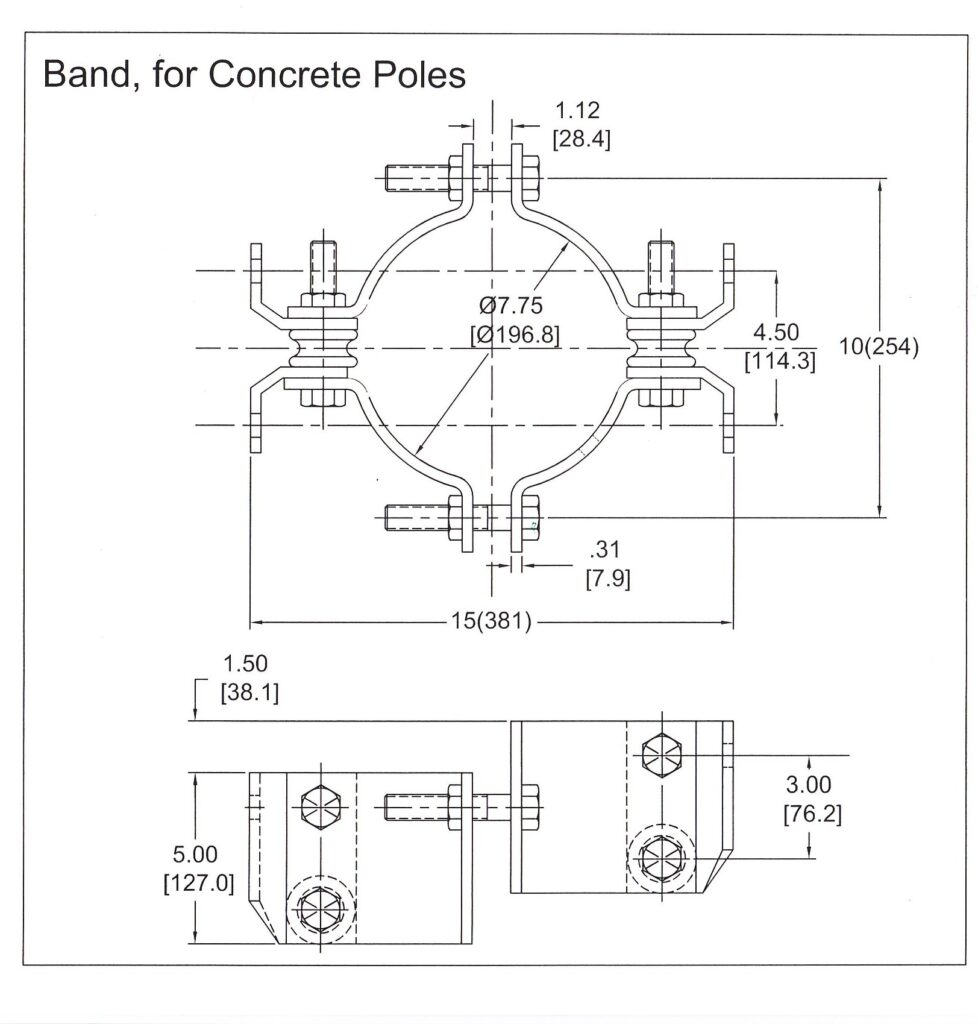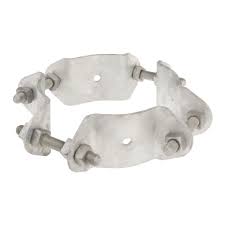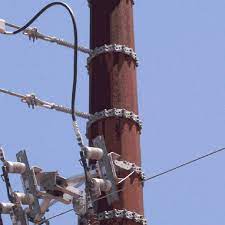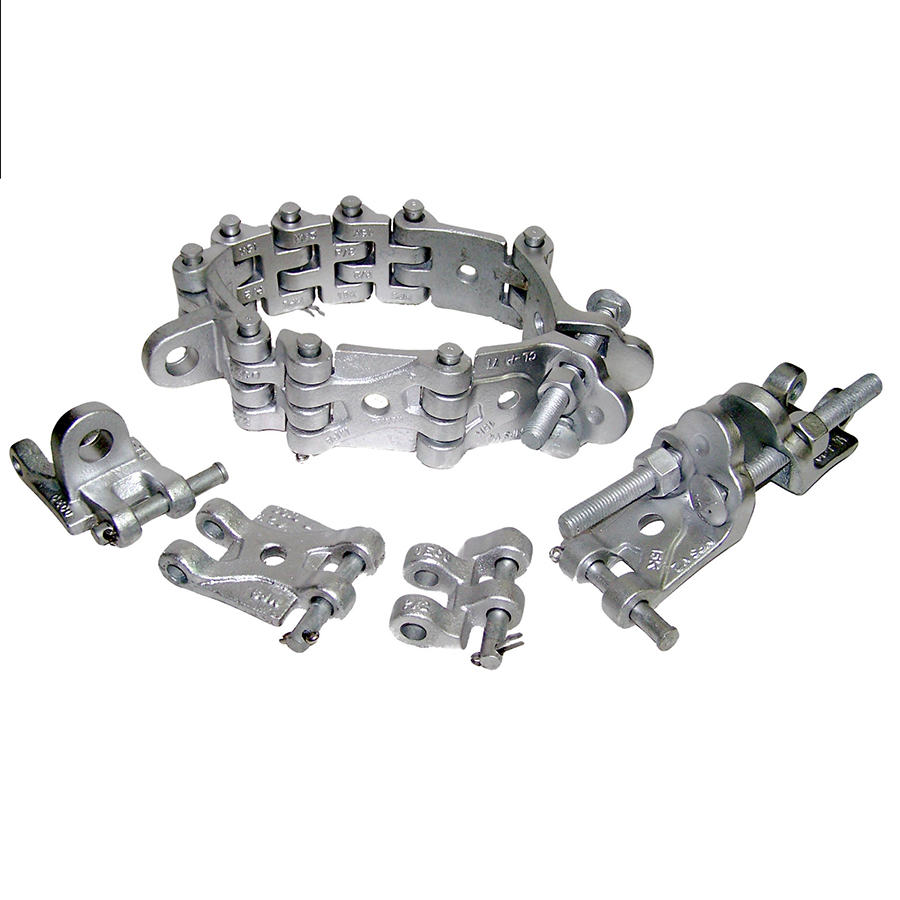
A pole band is a device used to secure conductors to utility poles or transmission towers. It is also known as pole strap or pole belt. The pole band helps to organize and secure cables to prevent sagging and maintain the correct clearances. It also helps to prevent electrical leakage between the conductors or other components. It is from durable materials like steel or other strong alloys. This helps them to withstand the various environmental challenges in South American countries. Common types of pole bands include bolted pole band, wraparound pole band, tension pole band and heavy-duty pole band. It finds use in various applications such as conductor attachment, cable management, insulator attachment, attachment of fiber optic cables and securing the hardware and accessories.
Key features of pole band
The key features of the pole band influence the design and functionality for securing conductors and other components. They also help to maintain the integrity and reliability of overhead transmission line systems. The following are the key features of the pole band.

- Material – pole bands are from durable materials like steel or aluminum that help resist corrosion.
- Secure attachment – they have designs to provide a secure attachment point for the conductors, cables and insulators. They also help to maintain proper clearance and prevent sagging.
- Tensioning mechanisms – this helps them to enable precise adjustment of the tension applied to the conductors.
- Saddle design – the saddle-shaped design allows them to fit over the pole to enhance stability.
- Load beating capacity – the pole bands can handle specific load bearing requirements.
- Corrosion resistance – they also have coatings that provide corrosion resistance.
- Ease of installation – the pole bands have easy and straightforward installation processes.
- Adjustability – this allows the pole band to fit to a range of pole sizes and conductors. This is to provide a secure fit and proper tension.
- Insulation – they have insulating materials to electrically isolate the conductors from the pole.
- Compatibility – they must be compatible with the type of conductors they are to secure.
Selection and installation of pole band
It is crucial do conduct a selection process to ensure the secure and reliable attachment of the conductors. This process involves considering several factors that influence the choice of the pole band. The factors include type of application, pole size, conductor type and size, load bearing capacity, insulation and ease of installation. The installation of pole bands is a crucial step to secure the conductors, cables and other components. The following is a general guide for the installation of the pole band.

- Preparation – gather all the necessary tools and materials required for the installation. Thee include fasteners, pole bands and insulating materials.
- Assessment – inspect the pole to ensure it is in good condition and free from obstructions.
- Attachment points – identify the specific points on the pole where the pole will install. The point should align with the intended location of the conductors.
- Pole band positioning – position the pole band around the pole and ensure it aligns with the attachment points.
- Securing – fasten one end of the pole band around the pole using the suitable tools and methods.
- Insulator attachment – install the insulators if necessary and ensure proper positioning and security.
- Conductor placement – position the conductors or cables on the pole band and ensure proper placement and spacing.
- Tightening – secure the other end of the pole band around the pole and ensure the conductors are properly tensioned and snug.
- Inspection – inspect the installation including pole band and conductors. Look for signs of damage, misalignment and irregularities.
- Documentation – maintain detailed records of the installation including dates and tension measurements.
Maintenance and inspection of pole band
Regular maintenance and inspection ensure the safety and reliability of overhead transmission lines. South America has unique environmental challenges that may influence the frequency. It also helps to identify and address potential issues that may cause failures of the systems. Additionally, it is advisable to consult with industry professionals for proper maintenance and inspections. The following is a basic guide for the installation and maintenance of pole bands in South America.

- Establish a schedule that outlines regular intervals for inspecting and maintaining pole bands. The frequency depends on factors like location, environmental conditions and specific requirements of the structures.
- Conduct visual inspections of the pole band and check for signs of wear, damage or corrosion. Look for corrosion, bolt tightness and alignment.
- Measure the tension of the conductors secured by the pole bands to ensure they maintain the desired tension levels.
- Assess the environmental conditions of the region that may influence the performance and maintenance.
- Check for the stability of the anchor points especially in areas prone to soil erosion or ground movement.
- Repair or replace the components that show signs of wear, damage or corrosion. Repairs and replacements should meet the relevant industry standards.
- Keep detailed records of all inspections and maintenance activities. Include dates, findings and actions taken.
Comparative analysis for pole bands in South America
A comparative analysis involves assessing various factors that shape the use and performance of pole bands. It includes evaluating factors such as designs, types, brands, manufacturers and suppliers in the market. The analysis helps to ensure proper selection of the pole bands for specific requirements of the application. Additionally, it is advisable to seek guidance from industry professionals for proper selection. The following are the factors to include in the comparative analysis for pole bands in South America.
- Industry applications – pole bands find use in various applications in south America. Assess the effectiveness of the bands in applications. These applications include power transmission, telecommunication and renewable energy.
- Material – consider how well the materials for pole bands withstand corrosion. Common choices include galvanized steel, stainless steel and aluminum.
- Maintenance practices – consider the frequency of maintenance and inspections of the applications.
- Infrastructure development – assess the level of infrastructure development and investment in the region. This is because it influences the demand for pole bands in various installations.
- Environmental conditions – evaluate the various environmental conditions that may influence the use of pole bands. Assess how well the pole bands resist these conditions.
- Safety standards – the various standards and regulations in the region affect the section and use of pole bands.
- Local expertise – availability of local manufacturers and suppliers make it easy for procurement and increase competition.
Certifications and standards in South America
Certifications and standards of pole bands help to ensure the safety and reliability of installations in the region. These standards in south America vary depending on the country. Some countries adopt the international standards and regulations for pole bands. Also, it is important to ensure the selected pole bands meets the relevant standards and regulations in the region. The following are the common standards and certifications for pole bands in south America.

- ISO certification – this develops and publishes standards that ensure quality and performance of the pole bands.
- IEC standards – this provides standards for overhead electrical conductors and other fittings.
- ANSI standards – these are standards that cover various aspects of materials and components used in infrastructure projects.
- Local regulatory authorities – south American countries have their own regulatory authorities that set standards and certifications for pole bands.
- Galvanization standards – these are standards related to hot-dip galvanization of steel products. This helps to ensure corrosion resistance of pole bands.
- Safety standards – these are standards and certifications related to safety and use of equipment during the installation and maintenance of pole bands.
Regional market for pole bands in South America
Various factors influence the regional market for pole bands in south America. These include infrastructure development, industrial growth and need for reliable electricity. These factors influence the demand and availability of pole bands in the market. It also depends on the manufacturers and suppliers available in the market. Additionally, it is advisable to observe the market trends and dynamics that influence the market for pole bands. The following are the factors that shape the regional market for pole bands in South America.

- Coastal regions – coastal regions require the pole bands with special features to ensure the corrosion resistance. This is due to the saltwater and high humidity conditions in the region.
- Agricultural sectors – pole bands secure components such as crossarms, brackets and transformers used in agricultural regions.
- Regulations – pole bands should comply with the local regulations and industry standards in the region.
- Urban and rural applications – pole bands help to secure utility poles, traffic signal structures and streetlights in urban and rural areas.
Frequently asked questions
Pole bands are devices used to secure conductors, cables and other components to utility poles. Their purpose is to provide stability, support and organization for overhead infrastructure.
Proper design, material selection and maintenance are essential for ensuring stability and safety. You should also adhere to local and regional regulations to ensure safety of the installation.
The frequency of maintenance and inspection depends on factors like environmental conditions, industry regulations and the specific application.